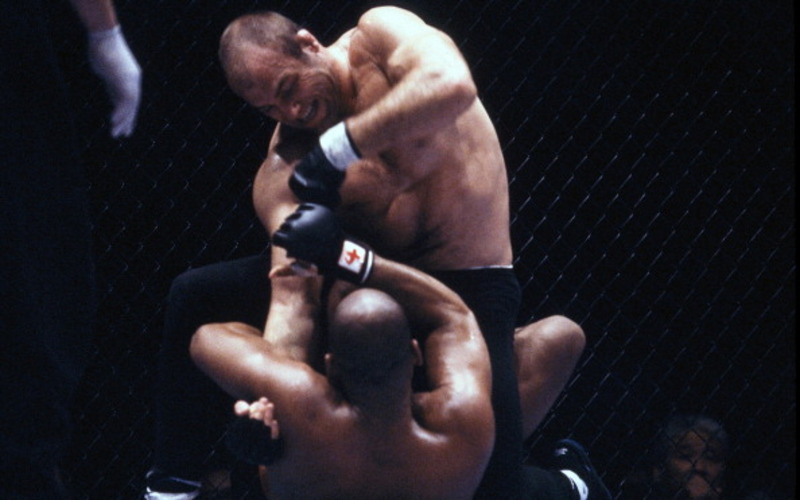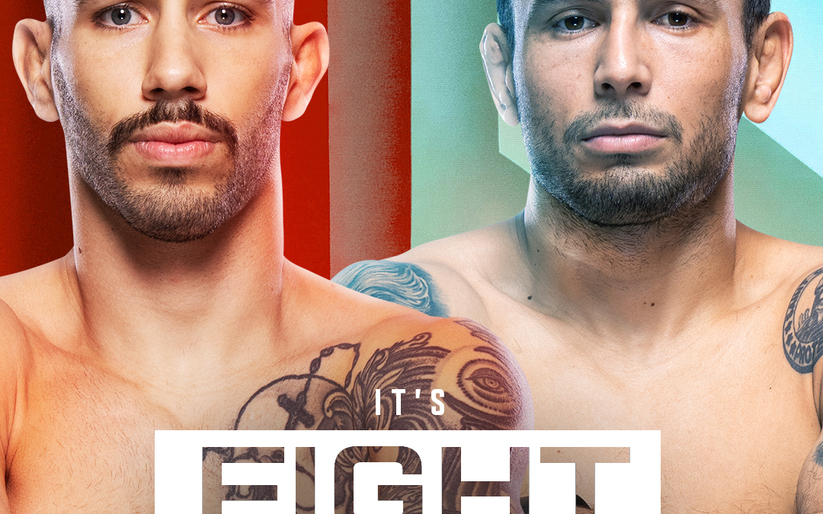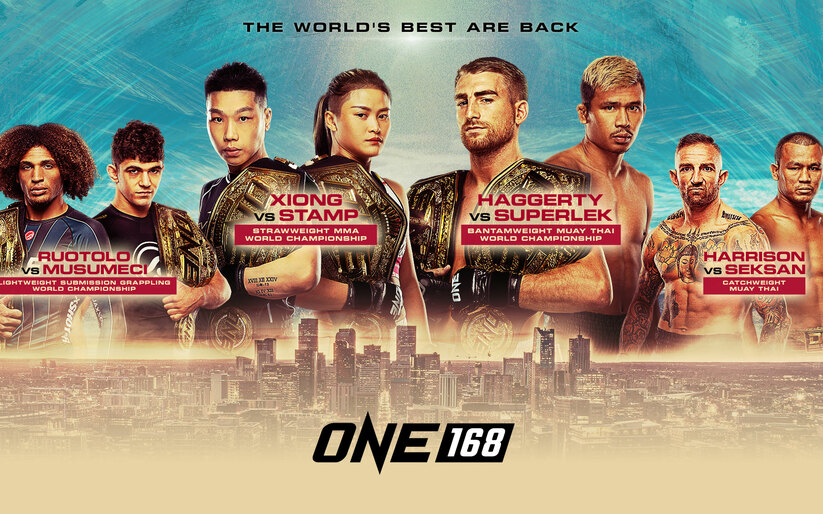At last week’s press conference Nobuyuki Sakakibara announced that Rizin will hold the first event in their ‘Trigger’ series. What’s interesting, the fights that will take place on November 28th at the Kobe World Memorial Hall in Kobe, Japan will take place inside the steel cage. Mr. Sakakibara stated that:
“There are many fighters who are looking to compete overseas, where the cage is more common,” Rizin’s Nobuyuki Sakakibara said in the release. “We would like to provide opportunities to Rizin fighters to be able to compete in both platforms to prepare themselves for higher competition. Our original cage is currently being built, and hopefully, it’s done on time.”
It came as a surprise for many fans, as Rizin was drawing its’ image from glory days of Sakakibara’s previous promotion, legendary Pride FC. Surprising, as it may be, it’s not the first time that Japanese promotors tried to utilize cage in their organizations. Let’s take a look a brief look at their past attempts.
First, there was a ring
Japanese MMA promoters and fans have attached great importance to the image of all-style hand-to-hand combat as a sports discipline. The use of the point system, resignation from punches with a closed fist, and the place where fights take place, which is the traditional ring, were elements of building the image of individual organizations as a place where sports competition takes place. Some of the above-mentioned things were common. Both referring to UWFi shoot wrestling and bringing Japanese fans closer to the “fight without rules” known so far from Brazil, Vale Tudo Japan wanted to be seen as a federation promoting a sporting spirit of fighting and did everything to avoid associations with no rules whatsoever. rules of a street brawl. However, the publicity accompanying the first tournaments organized under the flag of the Ultimate Fighting Championship did not spare Japan, and it was only a matter of time before the organization of the cherry blossom galas in the country similar to those organized in the USA.
K-1 and its squared circle
On September 9, 1994, the UFC’s third event, consisting of an eight-man tournament, takes place. Its winner will have to fight and most importantly – win, three times in one evening. The favorite to cope with this challenge is Royce Gracie, who was the winner of the previous two tournaments. His opponent in the first fight was debuting Kimo Leopoldo, a Taekwondo adept from Hawaii.
The fight lasted less than 5 minutes and despite the prevailing conditions of the Hawaiian, Gracie managed to overthrow him, control his position, among others. by pulling the hair in a ponytail to finally end the clash with the lever on the elbow. At this point, Leopold’s career might have gone quite differently, but due to his physical exhaustion, Gracie had his corner throw the towel just before the second fight began. Leopold quickly became known as the one who pushed a member of the Gracie family to the limit of his physical abilities and was credited with Gracie’s withdrawal from the tournament. It should be remembered that the whole family already had a well-established reputation as the best martial arts fighters in the world. With Royce dominating the octagon, Rickson Gracie had already won the premiere Vale Tudo Japan tournament. To be on everyone’s lips, the American only needed one fight, after which his 5 minutes of fame began.
K-1 Revenge’94
The first organization determined to organize a “cage fight” in front of the Japanese audience was K-1. So far, this federation has organized fights in the stand-up formula it promotes, allowing for confrontations of representatives of various hit disciplines. Wanting to end the second year of its activity with a strong accent, K-1 decided to organize a fight referring to the term “no holds barred”, one of the participants of which was to be the Hawaiian slayer of Royce Gracie. The search for an opponent for him was quite intense, but mainly fighters from the UFC were taken into account. The choice fell on Patrcik Smith, who took part in the first two UFC tournaments, in the second reaching the final, finally losing to the aforementioned Royce. In addition, he also fought three fights in the K-1 formula, of which he only won one. The fight was contracted for the Legends gala in December and was called “Special Dream Match.” It took place at the end of the gala, after the regular K-1 clashes.
Interestingly, the organization itself released an hour-long documentary entitled “K-1 Legend: Kimo vs Smith Japan’s 1st Golden Fence Ultimate Fight”, and its content consisted of excerpts from the press conference, statements by participants in the fight, comments from other fighters about the fights in the formula “No holds barred” and the start itself.
On December 8, the aforementioned press conference took place, during which both fighters gave introductory, friendly statements. The competitors fighting on the K-1 rules were less favourable. Almost everyone condemned the idea of organizing a “no rules/cage fight” and saw it acting to the detriment of combat sports. There was also a shared view that such fights involve players with serious skill deficiencies, whose only method of winning is to use methods known from the street. On the ninth of December, a meeting was held where the issues of the rudimentary rules were discussed, a day later 9,550 fans gathered in the Rainbow Hall in Nagoya to watch the formation of MMA history.
The fight itself took place in a square cage, the walls of which were placed on the inside of the ring ropes. The structure was so provisionally assembled that the walls bent under the pressure of the competitors pressing against them. After three minutes of trading punches in the clinch, a few knockdowns, hair-pulling, and fist-bumping on the ground floor, Patrick tapped the mat. The first victory appeared in Kimo’s balance sheet. It is worth noting that in the company of New Japan Pro Wrestling representatives sat Antonio Inoki himself, whose ambition was to face the winner of the described clash at the Battle 7 event, which was to be held on January 4 of next year. Such a fight was especially useful for K-1, because the January event was the most important event in the NJPW calendar, and the fight with Inoki guaranteed publicity for his opponent and the organization he represented. After the fight ended, Inoki and the NJPW officials accompanying him went to Leopold’s locker room to conduct preliminary contract negotiations. Kimo, however, rejected the offer, which thwarted the plans of the largest Japanese federation Puroresu. Let me just add that the event gathered 52,500 fans in the Tokyo Dome Hall and brought over 4 million dollars in profit. Kimo instead decided to try his hand at K-1 and entered the K-1 Grand Prix ’95 qualifiers but lost to Masaaki Sasaki .
Kimo did not return to Japan until 1996, to face Kazushi Sakuraba, a shoot wrestling star debuting in MMA in Super Fight on July 14 at Shoot Boxing: S-Cup 1996. The Hawaiian won in the fifth minute of the first round by choking a triangle with his hands. Thanks to this victory, Leopoldo was still in the spotlight of Japanese fans and it was known that he would still fight in front of the local audience.
U-Japan: Pro wrestling vs.The World
Another offer from the Japanese promoters was the fight at the premiere gala of the U-Japan organization, called Super Fighting’96 Vol 1. The intention of the organizers was to transfer the American model of the events, known mainly from the UFC, to the local market. All fights were to take place in an octagonal cage, and the rules reflect what was known under the phrase “no holds barred.” Using the dispute on the line of Nobuhiko Takada, representing Puroresu, and Rickson Gracie, the organizers promoted their event as a real test of pro wrestlers’ skills. Most of the fights have been compiled as clashes between pro wrestlers with representatives of real combat sports. Originally, Kimo’s opponent was to be Leon White, known to pro wrestling fans as Vader. The American fought three battles with Takada, which was one of the most important events in the history of UWF -i promotion. The fight at U-Japan itself was to be the highlight of the evening and reflected the well-known trend of David’s fight with Goliath.
Unfortunately, the negotiations that started at the beginning of the year were broken when Vader signed with the World Wrestling Federation, which ruled out his participation outside the promotion. Ultimately, Leopold’s opponent was Scott “Bam Bam” Bigelow, who was known to Japanese fans from appearances in NJPW and All Japan Pro Wrestling and then represented a local federation called Wrestling Association R.
From other famous names in the fight card, there were: Dan Severn, Don Frye, David Beneteau, Wallid Ismael, Yoji Anjo, and Paul Valeant. There was also likely the first women’s fight in history, in which Becky Levi, training under Frye’s windows, defeated the star Joshi (the Japanese term for a pro wrestling competitor) Yoko Takahashi.
The event was held on November 17th at the Tokyo Ariake Coliseum, and seven out of eight fights ended after a few minutes, of which as many as 4 due to tapping under the pressure of punches on the ground. There were also such combat elements as hitting the back of the head, holding the net or headbutts. The fight of the evening lasted less than 3 minutes when Leopoldo surrendered a much heavier and taller Bam Bam with a rear-naked choke.
In an interview many years after the event, Scot Bigelow maintained that his fee for the fight was $ 100,000 and that the fight itself was arranged without Leopold’s knowledge. In turn, the Wrestling Observer Newsletter informed its readers that the wrestler’s gauze was around $ 70,000, and the gala itself earned $ 227,000 in ticket sales. The hall, which could accommodate 12,000 spectators, was to host only 5,000 fans, who, however, warmly welcomed such events. The participants of the talk show broadcast on TV-Asahi, which was broadcast the day after the gala, were less favourable. The audience gathered in the studio was shown a 20-minute summary of all the fights, and the host of the program described the gala as a brutal show, having nothing to do with sports rivalry. In his opinion, it was only a matter of time before the ban on the organization of this type of galas would appear.
First UFC Japan
The time has finally come for Japanese fans to see the difference between the followers and the original – on December 21, 1997, the octagon arrived in the land of the blooming cherry trees. It is at this gala that Mike Goldberg will sit at the commenting table for the first time, and all players will see individual musical pieces accompanying them on their way to the cage. Known for his performances in Pancrase and Vale Tudo Japan, Frank Shamrock became the first light heavyweight champion in the history of the organization. Randy Couture will dethrone Maurice Smith through a referee decision and become the new heavyweight champion, then the title will be cancelled due to disagreement over the player’s contract.
There was also a one-night tournament, which at that time was the showcase of the UFC. Tank Abbott, Anjo, Marcus Silveira, and Kazushi Sakuraba joined the four-person tournament. The latter lied about its weight, as the tournament was intended for heavyweight players. Abbott, thanks to the referee’s decision, defeated Yoji, but during the fight he broke his arm and both were eliminated from the tournament. In the second semi-final, John McCarthy made the mistake of ending the fight too early, which lead to a no Contest. Sakuraba and Silveira fought one more time, this time to win the entire tournament.
More promotions utilizing the cage
Ultimate Japan took place a month after the premiere of Pride FC. At first, the KRS consortium’s initiative was to organize only one gala, but after Dream Stage Entertainment took over the rights, the organization gained momentum and became the leading force in MMA in Japan. For over two decades, the cage had to give way to the traditional ring. It was not until the 12th gala of the Dream organization that the cage, but the hexagonal one, returned to Japan for good. The aforementioned organization began to use it alternately with the ring.
A few years later, on March 30, 2014, the Pancrase 257 gala took place, ending the era of the ring in this deserved organization. On May 11, the ten-sided cage made its debut at the gala with the number 258. The metal structure also made its debut at the Deep Dream Impact New Year’s Eve gala closing this year. Vale Tudo Japan followed in the footsteps of both organizations, which in cooperation with the Asian tycoon ONE also put on an octagonal cage.
These changes are sign of the end of a certain era of classic Japanese MMA, which had its own unique character with the ring as a symbol, as well as the next stage of its evolution and adaptation to world standards. Will this process be successful in the words of Lord Sakakibara? Only time will tell.
Featured Image
Embed from Getty Images



